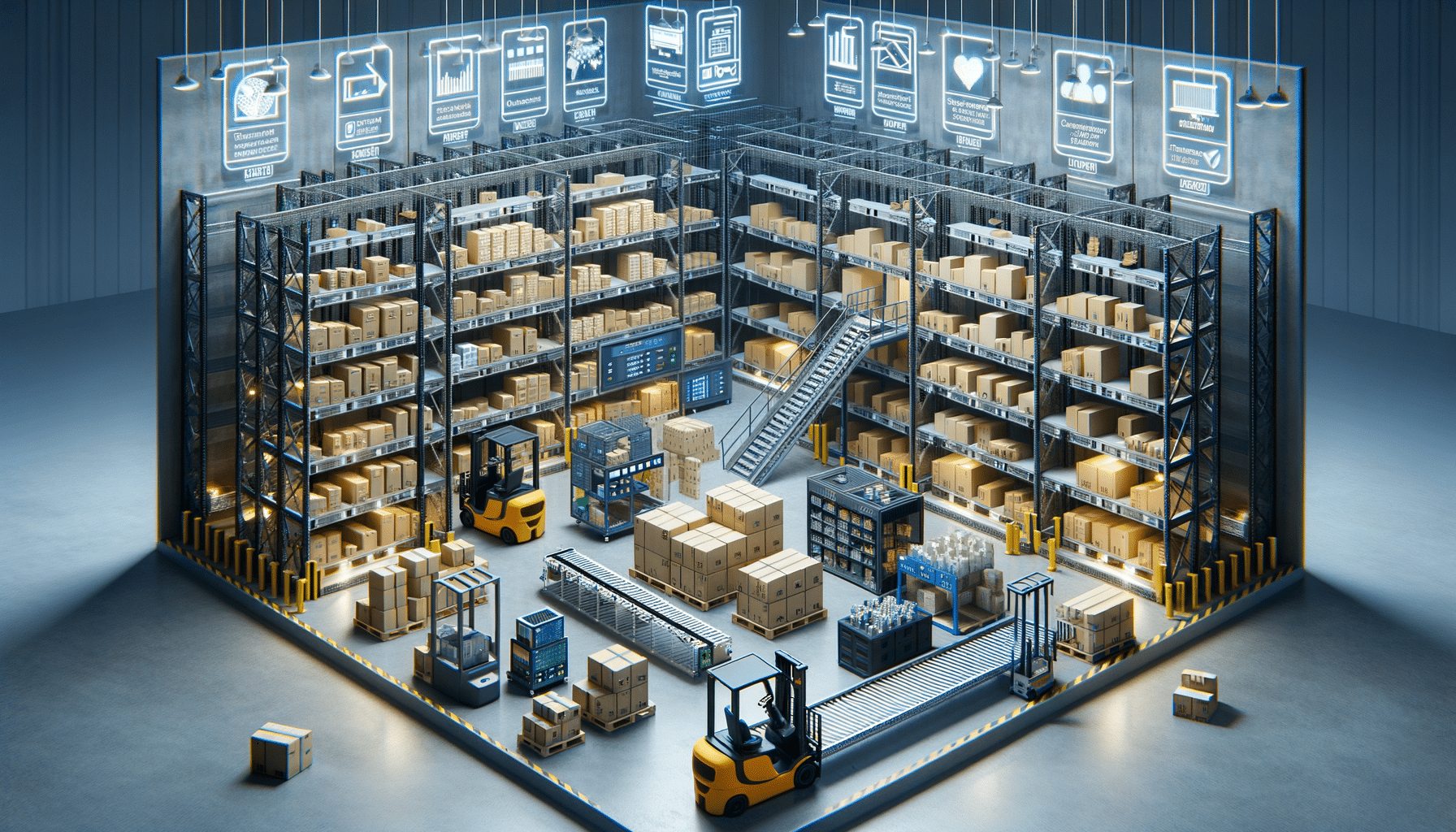
Understanding the Role of Warehousing Storage in Modern Supply Chains
The Importance of Warehousing Storage in Supply Chain Management
In today’s fast-paced and globalized economy, warehousing storage plays a crucial role in the efficiency and effectiveness of supply chain management. As businesses strive to meet customer demands swiftly and accurately, the need for strategically located warehouses becomes more apparent. Warehousing storage is not just about storing goods; it encompasses a range of activities that ensure products are kept safe, organized, and ready for distribution.
Warehouses act as a buffer in the supply chain, absorbing fluctuations in demand and supply. This buffering capability is essential for businesses to maintain a steady flow of goods, even when unexpected disruptions occur. Moreover, warehousing storage allows for bulk purchasing and storage, which can lead to significant cost savings for companies. By purchasing in larger quantities, businesses can take advantage of economies of scale, reducing per-unit costs and increasing profit margins.
Furthermore, warehousing storage facilitates efficient inventory management. With advanced inventory tracking systems, businesses can monitor stock levels in real-time, reducing the risk of overstocking or stockouts. This capability is crucial in maintaining customer satisfaction, as it ensures that products are available when needed. Additionally, warehouses often serve as centers for value-added services such as packaging, labeling, and quality control, further enhancing the supply chain’s efficiency.
To sum up, warehousing storage is a vital component of modern supply chain management. It not only provides a space for storing goods but also enhances operational efficiency, cost-effectiveness, and customer satisfaction. As businesses continue to grow and evolve, the role of warehouses in the supply chain will undoubtedly become even more significant.
Types of Warehousing Storage Solutions
Warehousing storage solutions are diverse, catering to the varied needs of different industries. The choice of a particular type of warehousing storage depends on factors such as the nature of the goods, the volume of inventory, and the specific requirements of the supply chain. Understanding the different types of warehousing storage solutions can help businesses make informed decisions to optimize their logistics operations.
One common type of warehousing storage is the public warehouse. These facilities are owned and operated by third-party logistics providers and offer storage space on a rental basis. Public warehouses are ideal for businesses that require flexible storage solutions without the need for long-term commitments. They provide a cost-effective option for companies with seasonal inventory fluctuations or those entering new markets.
Another option is the private warehouse, which is owned and operated by the company using it. Private warehouses offer greater control over storage and distribution processes, allowing businesses to tailor the facility to their specific needs. While private warehouses require a significant initial investment, they can lead to long-term savings and efficiencies for companies with stable and predictable inventory levels.
For businesses dealing with perishable goods or products requiring specific environmental conditions, climate-controlled warehouses are essential. These facilities maintain temperature and humidity levels to ensure the quality and safety of sensitive products. Cold storage warehouses, for example, are crucial for the food and pharmaceutical industries, where temperature fluctuations can lead to spoilage or product degradation.
Lastly, automated warehouses are gaining popularity due to advancements in technology. These facilities use robotics and automated systems to handle inventory, reducing the need for manual labor and increasing efficiency. Automated warehouses are particularly beneficial for large-scale operations with high-volume inventory turnover, as they can significantly speed up the picking and packing processes.
In conclusion, the choice of warehousing storage solutions should align with a company’s specific needs and operational goals. By selecting the right type of warehouse, businesses can enhance their supply chain efficiency, reduce costs, and improve service levels.
Challenges and Innovations in Warehousing Storage
While warehousing storage is essential for efficient supply chain management, it is not without its challenges. One of the primary challenges is the ever-increasing demand for faster delivery times. As e-commerce continues to grow, customers expect rapid order fulfillment, putting pressure on warehouses to process and dispatch orders quickly. This demand for speed can strain existing warehousing infrastructure and require significant investments in technology and personnel.
Another challenge is the need for sustainable warehousing practices. As environmental concerns become more prominent, businesses are under pressure to reduce their carbon footprint and adopt eco-friendly practices. This shift requires warehouses to implement energy-efficient systems, reduce waste, and explore renewable energy sources. While these changes can lead to long-term benefits, they often require substantial upfront investments.
Despite these challenges, the warehousing industry is witnessing exciting innovations that promise to transform storage and logistics operations. One such innovation is the use of artificial intelligence (AI) and machine learning to optimize warehouse operations. AI can analyze vast amounts of data to predict demand patterns, optimize inventory levels, and improve picking and packing processes. This technology can lead to more efficient operations and better resource allocation.
Furthermore, the rise of the Internet of Things (IoT) is revolutionizing warehousing storage. IoT devices can monitor and track inventory in real-time, providing valuable insights into stock levels and movement. This capability enhances inventory accuracy and reduces the risk of stockouts or overstocking. Additionally, IoT-enabled warehouses can improve safety by monitoring environmental conditions and equipment performance.
In summary, while warehousing storage faces several challenges, it is also a field ripe with innovation. By embracing new technologies and sustainable practices, businesses can overcome these challenges and create more efficient and environmentally friendly warehousing operations. As the industry continues to evolve, staying informed and adaptable will be key to maintaining a competitive edge.